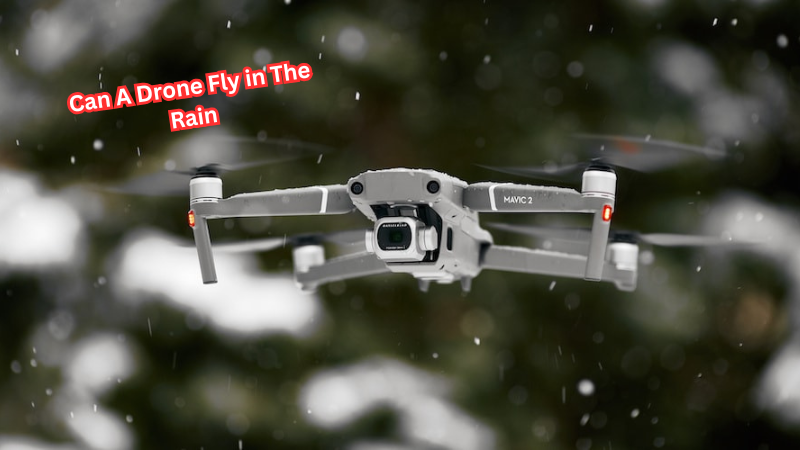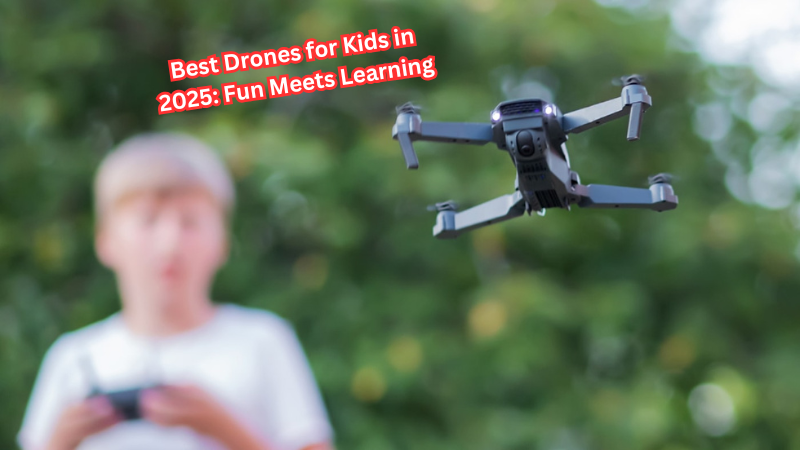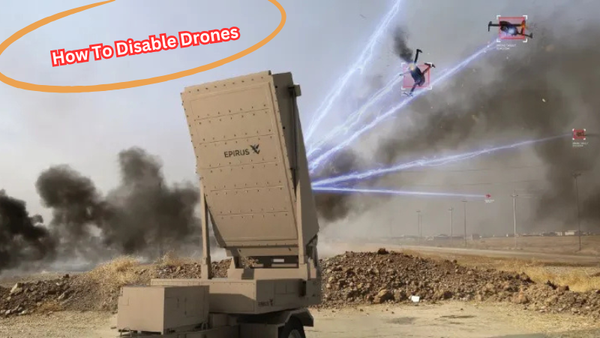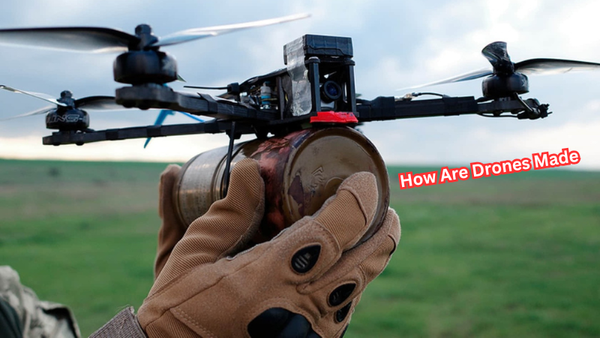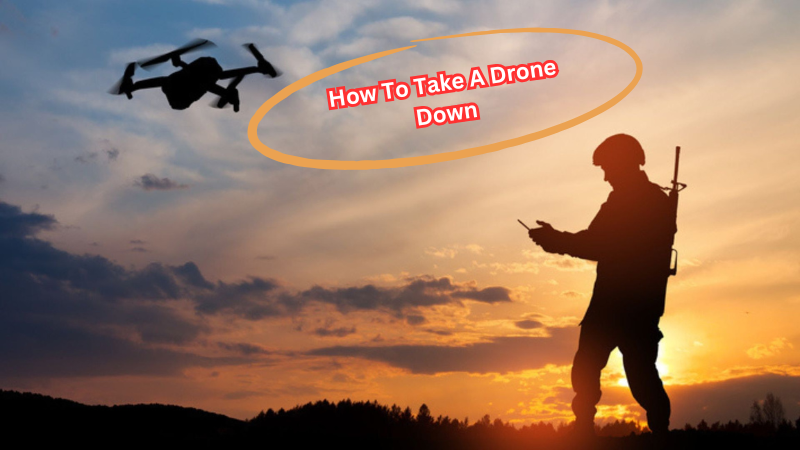Drones have rapidly become indispensable tools, transforming industries like photography, agriculture, delivery services, and more. Their ability to provide aerial perspectives and perform tasks efficiently has captured the imagination of professionals and hobbyists alike.
However, operating drones isn’t always straightforward—especially when environmental factors, like weather, come into play. Rain, in particular, poses a unique challenge, leaving many to wonder, “Can a drone fly in the rain?” From potential water damage to impaired performance and safety risks, wet conditions can significantly affect a drone's functionality.
This blog dives into the technical hurdles, safety concerns, and emerging solutions, helping you understand whether venturing out with a drone on a rainy day is worth the risk.
Overview of Drone Technology
Before we dive into the specifics of drone flying in the rain, let's first understand how drones work and what makes them operate smoothly.
Drones are essentially flying robots, equipped with a variety of sensors, cameras, and other components that allow them to navigate, capture data, and perform tasks autonomously or under remote control. The basic components of a drone include:
- Frame: The physical structure of the drone that holds all the other components together.
- Motors and Propellers: These provide thrust and lift to keep the drone in flight.
- Flight Controller: A small computer that receives input from various sensors and determines how to adjust motor speeds for stable flight.
- Sensors: Drones are equipped with various sensors like GPS, accelerometers, and gyroscopes to provide data on altitude, orientation, and speed.
- Camera/Gimbal: Some drones come with built-in cameras or can attach one for capturing images and videos from above.
- Battery: The power source that keeps the drone running.
These components work together to keep the drone in flight and perform tasks like capturing images or delivering packages. However, when it comes to flying in the rain, these same components can become liabilities.
Types of Drones
Here are the most common types of drones used for personal and commercial purposes:
Consumer Drones
Consumer drones are the go-to choice for hobbyists and casual users. These drones are easy to use, relatively affordable, and packed with features like high-resolution cameras, intelligent flight modes, and obstacle avoidance systems. They’re perfect for activities like aerial photography, videography, and even recreational flying.
Popular models like the DJI Mini 3 Pro or the Autel Evo Nano+ are celebrated for their compact size and impressive camera capabilities. Whether you want to capture stunning landscapes or memorable moments from a new perspective, consumer drones are your best starting point.
Commercial Drones
Stepping up in functionality and price, commercial drones are designed for professional applications. These drones are built to handle tasks such as surveying, mapping, delivery, and agricultural monitoring. They often feature longer flight times, higher payload capacities, and specialized sensors like thermal imaging or LiDAR.
For example, the DJI Matrice 300 RTK is commonly used in construction, search and rescue, and powerline inspections due to its robust design and advanced payload options. Commercial drones are essential tools that can improve efficiency and precision in a variety of industries.
Military Drones
Military drones, or Unmanned Aerial Vehicles (UAVs), are advanced machines used for defense and tactical operations. They range from small reconnaissance drones to large, heavily armed systems. Key features include long-flight endurance, high-tech surveillance equipment, and combat capabilities.
An example is the General Atomics MQ-9 Reaper, which is used for reconnaissance, surveillance, and targeted military strikes. The use of drones in the military not only increases operational safety by keeping personnel out of dangerous zones but also allows for precise and efficient mission execution.
Racing Drones
Racing drones cater to a growing community of high-speed enthusiasts and competitive pilots. These drones are built for agility, speed, and precision. Unlike consumer or commercial drones, they often require assembly and customization, offering enthusiasts a hands-on experience. Racing drones are specifically designed for competitive drone racing, where pilots maneuver their craft through obstacle courses at breakneck speeds.
Models like the BetaFPV Meteor75 or custom-built kits dominate the racing scene. Equipped with first-person-view (FPV) cameras, they provide an immersive flying experience that feels like you’re in the cockpit.
Can A Drone Fly in The Rain?
The short answer is, technically, yes—a drone can fly in the rain. However, there are significant risks and considerations to take into account before venturing out with your drone on a rainy day. Let's explore these further.
Technical Hurdles
As mentioned earlier, drones rely on various sensors and components to stay airborne and perform tasks effectively. When these components encounter water, they can malfunction or fail altogether. For example:
- Electronics: Water and electronics don't mix well. If water seeps into the internal circuitry of a drone, it can cause short circuits or damage crucial components.
- Motors and Propellers: Rain can make the propellers heavier, causing strain on the motors and reducing their performance. In extreme cases, water can cause the motor to stall or stop working altogether.
- Gimbal and Camera: Water droplets on the camera lens can distort images and hamper visibility, making it difficult to navigate and perform tasks accurately.
- Battery: Rain can also damage the drone's battery, leading to reduced flight time or even a complete power failure in some cases.
These technical hurdles not only affect the performance of a drone but also pose significant safety risks.
Safety Concerns
Flying a drone in wet conditions presents several safety concerns for both the operator and those around them. Some potential risks include:
- Electrical Hazards: A drone flying in the rain with damaged electronics can pose electrical hazards, especially if it comes into contact with power lines or other conductive surfaces.
- Visibility Issues: Rain can make it difficult to see and control the drone, increasing the chances of it colliding with obstacles or getting lost.
- Environmental Damage: Drones are equipped with powerful batteries that contain hazardous chemicals. If a drone crashes and its battery is damaged, it can leak harmful substances into the environment.
Additionally, flying a drone in the rain requires extra caution as wet conditions can also affect the operator's ability to maintain control and predict how the drone will behave. Strong winds and heavy downpours can significantly impact a
Technical Challenges of Flying a Drone in the Rain
The core function of a drone is to fly, and rain poses several technical challenges that can affect its performance. Here are some factors to consider:
Water Damage
Most consumer drones are not waterproof and aren't designed to withstand heavy rain or water exposure. Even if the drone is labeled as water-resistant, it's only designed to withstand light splashes or brief exposure to drizzle. Extended periods of flying in heavy rain can lead to irreparable damage to the drone's internal components.
Reduced Visibility
Flying a drone requires good visibility. Rain can obscure your view and make it challenging to navigate and avoid obstacles. This presents a significant safety risk for both the operator and those around them.
Impact on Flight Time
Rain can increase the weight of the drone by soaking its frame, propellers, and other components. This added weight puts extra strain on the motors and drains the battery faster, reducing flight time significantly.
How to Make Drones Waterproof
While most consumer drones are not waterproof, some higher-end models come with water-resistant features. However, there are also steps you can take to make your drone more capable of flying in wet conditions:
- Protective Coating: Some companies offer protective coatings that can be applied to the drone's frame and components to make them water-resistant.
- Waterproof Battery Compartment: You can purchase a waterproof battery compartment or make one yourself using sealant or waterproof tape.
- Drone Umbrella: A creative solution is attaching an umbrella-like attachment to your drone's frame. This will help keep the rain off and prevent it from entering through the propellers.
Keep in mind that even with these measures, flying in heavy rain is still not recommended.
Best Practices and Recommendations for Drone Operators
It's best to avoid flying a drone in the rain unless necessary. If you do need to fly in wet conditions, here are some best practices and recommendations to ensure safety and reduce potential damage to your drone:
- Check weather conditions: Always check the weather forecast before flying your drone. Even if there is only a small chance of rain, it's better to err on the side of caution.
- Avoid heavy rainfall: It's recommended to avoid flying in heavy rainfall or thunderstorms altogether as they pose significant risks for both the operator and the drone.
- Protect your drone: If you must fly in light rain, make sure to protect your drone by applying a protective coating or using a waterproof battery compartment.
- Maintain visibility: Keep your drone in sight at all times and avoid flying in low visibility conditions. Be aware of any potential obstacles that may be hidden by rain or fog.
- Bring extra batteries: Rain can significantly impact flight time, so it's important to bring extra fully charged batteries with you if you plan on flying in wet conditions.
- Be prepared for emergencies: In case of an emergency, make sure to have a backup plan and know how to safely land your drone in wet conditions.
By following these guidelines, drone operators can reduce the risks associated with flying in the rain and ensure the safety of themselves and those around them. It's crucial to always prioritize safety and be cautious when operating a drone, especially in challenging weather conditions. With proper preparation and precautions, drones can safely fly in the rain with minimal risks.
Which Drone Models are Waterproof?
As mentioned earlier, most consumer drones are not waterproof. However, some high-end models come with built-in water-resistant features or have the option to purchase additional waterproof accessories.
Some popular waterproof drone models include:
- DJI Mavic 2 Enterprise Dual: This model comes with an IP43 rating, making it resistant to water splashes and light rain.
- SplashDrone 3+: With an IP67 rating, this model can withstand heavy rain and even brief submersion in shallow water.
- PowerVision PowerEye: This drone has an IP43 rating and is designed to withstand light rains and wind speeds of up to 10 meters per second.
FAQs
Can a drone fly in adverse weather conditions like rain?
Most drones aren't designed to withstand adverse weather conditions such as rain. Moisture can damage electronic components and mechanical components, making operation unsafe. It's best to avoid flying during wet conditions unless the drone is specifically designed to be water proof.
What happens if rain enters the drone's air intake?
Rain entering the air intake can harm the drone's internal systems, including critical electronic components. This risk is heightened in adverse weather conditions, as moisture can lead to short circuits or mechanical failure, compromising the drone's safety and function.
Are there drones designed for flying in the rain?
Yes, some drones come equipped with wet suits or water proof casings to handle light rain. However, even such drones face challenges in high winds and poor visibility, which can occur in these adverse weather conditions, making operations risky.
How do poor visibility and high winds affect drone flight in rain?
Poor visibility and high winds can make flying a drone in the rain extremely difficult, even if it's water proof. These adverse weather conditions impair navigation and stability, putting strain on both electronic components and mechanical components of the drone.
Conclusion
Flying a drone in the rain presents significant challenges, from water damage to electronics and reduced performance to safety risks for both the drone and its surroundings. Rain can impair visibility, shorten battery life, and increase the risk of malfunctions.
However, advancements in waterproof technology and rain-resistant drones show promise for overcoming these hurdles. Despite these innovations, operators should always prioritize safety, ensuring they understand weather constraints and their drone's water resistance limits.
Conducting pre-flight checks and avoiding flights in heavy rain can prevent costly damage and accidents. By staying informed and taking precautions, drone enthusiasts can enjoy smooth and worry-free experiences, even when facing unpredictable weather. Always remember—preparedness is key to successful drone operation.
